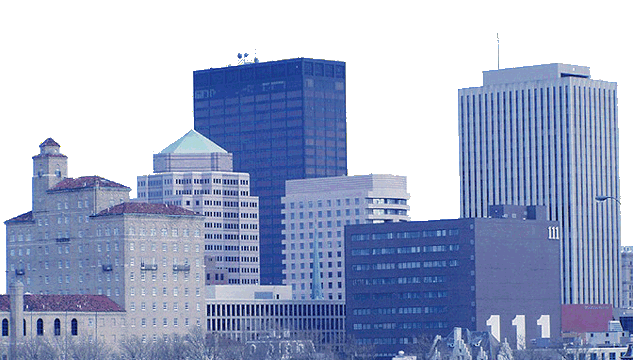
"Engineering a Better World"
(937) 223-5848

 |
Norton Engineering LLC
"Engineering a Better World"
(937) 223-5848
|
 |
| Consultants in Dayton, Ohio |
| PROJECT LINKS | |||||||||||||||
|
Stormwater Solutions Engineering Analysis and Advice Solid Waste Wastewater Site Planning Environmental Engineering Structural Engineering and Building Design Turnkey Engineering Investigative and Legal Reports |
Turnkey Engineering:Norton Engineering can do Turnkey Engineering Projects, and those can save our clients money, time, and effort. Turnkey Projects are perfect for businesses that need to focus on their daily operations and can't afford to get deeply involved with onsite construction projects. Our clients decide how much they want to get involved, but generally with our Turnkey Engineering Projects, we will do:
Here is an example of one of our current turnkey projects: Miami County Solid Waste Transfer Station:Over the past 6 years, Norton Engineering has been assisting Miami County with the Master Planning of their solid waste disposal program. Working with the staff, Norton developed a capital program and budget for their transfer station and long distance hauling program.This solid waste management district of about 100,000 people is now trucking approximately 100,000 tons per year of solid waste to landfill located roughly 70 miles to the west in the neighboring State of Indiana. New landfill agreements and hauling contracts are saving the County so much (approximately $650,000 per year) that they are funding their solid waste capital improvements program without additional financing. Norton Engineering has been responsible for this capital improvements program since 2003. Norton has engineered 7 major construction projects on the site. The projects involved a wide range of engineering projects including: site layout and planning, structural design, construction, Stormwater design, automation, site security, controls, and electrical design. Norton has been involved with these projects from beginning to end, as much as the client wants. We have prepared bid documents, including the invitation to bid, instructions to bidders, bid form and contract, construction plans and specifications, and drawings. We've been involved in the decision making processes, inspections, submittals, change orders and finalization of each project. We currently have two more projects in the design phase. Listed below are several Turn Key projects with a brief description of each; the degree of staff involvement changes with each. 1.Scale Addition and New Paving: This project included the addition of a 2nd outbound truck scale and necessary wiring, gates, loop detectors etc. to work in conjunction with the two existing scales. The project also included repaving portions of the site, additional pavement in some areas, some new curbing, new water and storm sewer lines and connections, new conduit runs for power and communication lines, and landscaping. A new front automated security gate was also installed.
2."Mom and Pops" Unloading Area: This project consisted of rehabilitating an unused docking area to serve for residential customers ("moms & pops"), small contractors, and do-it-yourselfers (whose previous, slow unloading efforts would tie up the normal commercial tipping floor. Safety of these once-in-a-while customers was preeminent in this design. The project involved laying out safe areas for unloading, adding some new retaining walls, and designing and buying guard rails and material chutes. Construction included excavation, paving, concrete work, steel erection (guardrails), and pavement marking. Norton wrote specifications, did drawings, and took bids to have most of the excavation and concrete done by a local contractor, but the necessary welding, and steel fabrications were done separately by a subcontractor used by the County for normal site maintenance (all, while normal business on the site was kept in operation.)
3.Scale House Reconstruction: The scale house at the transfer station is a little building where an attendant handles transactions from inbound and outbound trucks, issues weigh tickets, and keeps track of the types of materials being delivered. Its original layout had provided space for activities that never developed, but the space was unavailable for the staff and the additional equipment that had been installed over the years inside. Working with the supervisors and users of the scale house Norton redesigned the building space and achieved concurrence on a new layout and design. Norton then wrote specifications, did drawings, and took bids to change walls and reconfigure the interior, add new cabinets and counter space to provide for some much needed storage within the building. Previously, the building had a gabled roof with a 7 foot overhang above the windows on each side that was low enough to hit if a large truck had anything sticking out the top. With the additional scale, a canopy was desired to shelter the scales and the necessary transactions from the weather. This required reconstruction of the existing roof. A shallow sloped standing seam metal roof was designed by Norton Engineering to replace the existing roof. Again, Norton wrote specifications, did drawings, and took bids to have the old roof removed and the new one constructed by a local contractor (all, while normal business on the site was kept underway.)
3.Scale House Roof Canopy: A new "gas station" type roof canopy was designed to shelter the scales and scale house operations. The canopy extends 95 feet by 68 feet and has 6 columns. The columns and footers were designed as not to disturb current traffic flow and to avoid existing underground utilities. Special conditions were taken into consideration to keep the scales operational during normal business hours. Again, Norton achieved staff concurrence, wrote specifications, did drawings, and took bids to have the old roof removed and the new one constructed by a local contractor (all, while normal business on the site was kept underway.)
3.Site Security Improvements: The objective of this project was to improve the transfer station's security by providing better monitoring capability across the site in order to allow for a degree of after-hours, automated use of the site by regular, pre-qualified customers. This work entailed installing several new digital video cameras inside and outside the buildings, and connecting them all to a central digital video recorder for the facility. Some of the cameras needed to be flexible, capturing usable footage throughout the day and night. Some of the equipment needed to adjust to very low light conditions at night, and then recover each day to work in very bright light. Again, Norton achieved staff concurrence, wrote specifications, did drawings, and took bids to have the necessary equipment installed by a local contractor (all, while normal business on the site was kept underway). For this project some on-site demonstrations of various equipment possibilities was arranged so that the final result was a project using equipment and styles very much to the liking of the operations staff. 3.Pump Station: During serious stormy seasons (maybe every 4 or 5 years), most of the front yard of the County Solid Waste Transfer Station (about 6 acres) will fill up with Stormwater (thereby reducing the shock flooding downstream in the Great Miami River). It's the way mother nature laid out the property originally. When this happens, though, the transfer station loading "tunnel" would have as much as 18 inches of water backed up onto the areas where the Semi-trucks load. Staff would handle these periods stoically, with high boots on, and the truck were high enough to pass through it OK. But it was never a good situation to work in; on occasion it would freeze. Norton Engineering reviewed the original building drawings, and analyzed the existing drain pipes through which the water would back up onto the floor. Norton then designed a small, site specific pump station to keep this water out of the tunnel. The design is such that the pump will only see use when the river water backup reaches the level of the tunnel floor. At that time staff will switch two valves to allow the falling rain water from the tunnel ramps to be pumped over into the front yard basin. Again, Norton achieved staff concurrence, wrote specifications, did drawings, and got the necessary equipment installed, this time by transfer station maintenance staff (while normal business on the site was kept underway). 3.Scale Automation: The original scale operation at the transfer station had been largely manual due to two separately provided, incompatible systems; scale information could be printed in a report each day, but it needed to be manually transcribed into the billing system each day in order for customers to be properly invoiced monthly. Norton invited several potential scale automation bidders to visit the County Transfer Station Site for on-site presentations to all interested staff of the Department. Then, after discussions with staff about the various merits of available systems from the scale automation industry, Norton wrote specifications, conducted the necessary public bidding procedures and recommended, in conjunction with key staff members, the firm to be used to automate the County's automation upgrade. In this project, from that point on, staff handled the work with the selected contractor without further help from Norton Engineering. |
Home |
Projects |
Green Energy Solutions |
Environmental and Related Information |
Norton's Experience |
Client Satisfaction |
Contact Us
Copyright © 2000-2023 Norton Engineering LLC All Rights Reserved.